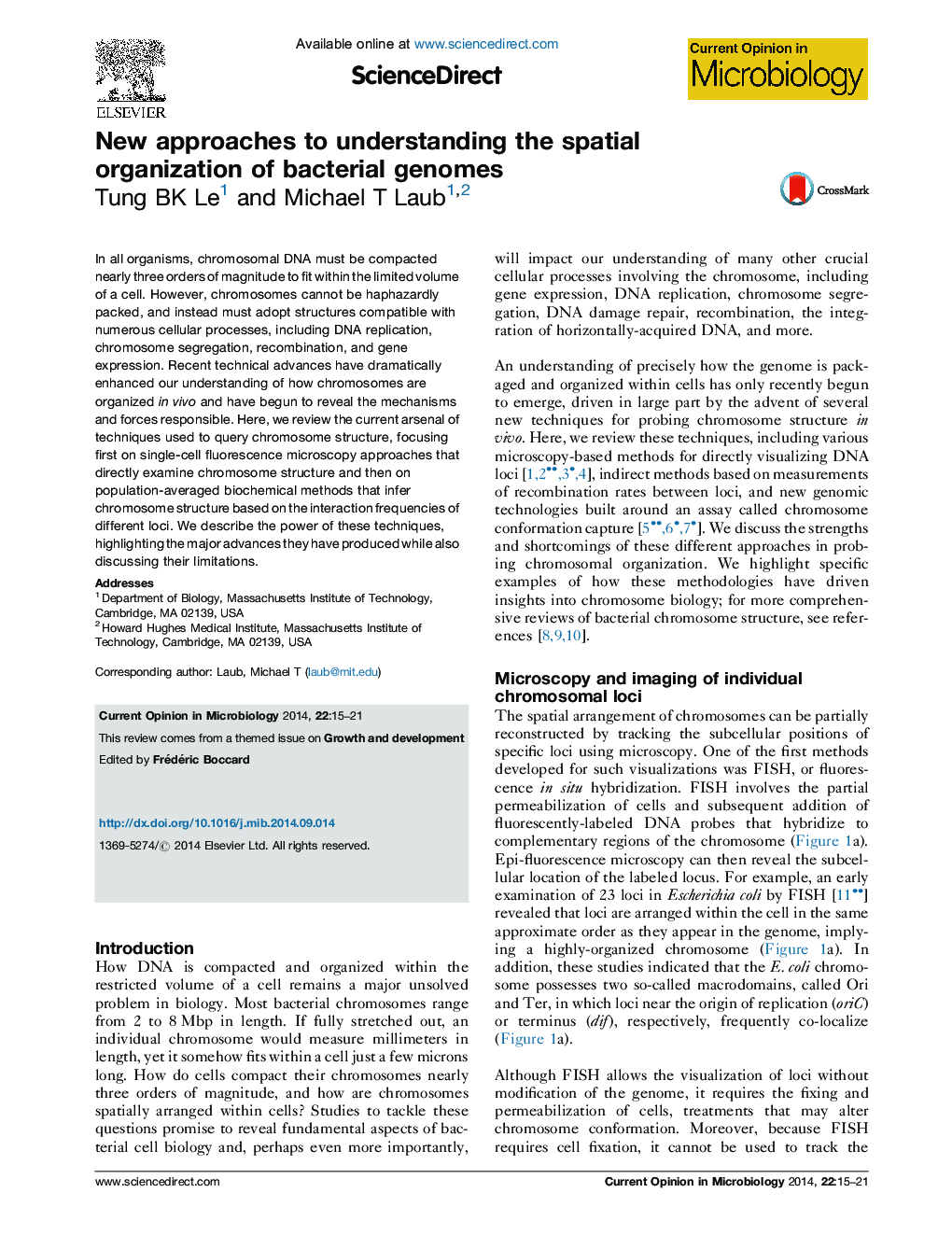| Article ID | Journal | Published Year | Pages | File Type |
|---|---|---|---|---|
| 6131899 | Current Opinion in Microbiology | 2014 | 7 Pages |
Abstract
In all organisms, chromosomal DNA must be compacted nearly three orders of magnitude to fit within the limited volume of a cell. However, chromosomes cannot be haphazardly packed, and instead must adopt structures compatible with numerous cellular processes, including DNA replication, chromosome segregation, recombination, and gene expression. Recent technical advances have dramatically enhanced our understanding of how chromosomes are organized in vivo and have begun to reveal the mechanisms and forces responsible. Here, we review the current arsenal of techniques used to query chromosome structure, focusing first on single-cell fluorescence microscopy approaches that directly examine chromosome structure and then on population-averaged biochemical methods that infer chromosome structure based on the interaction frequencies of different loci. We describe the power of these techniques, highlighting the major advances they have produced while also discussing their limitations.
Related Topics
Life Sciences
Immunology and Microbiology
Microbiology
Authors
Tung BK Le, Michael T Laub,
